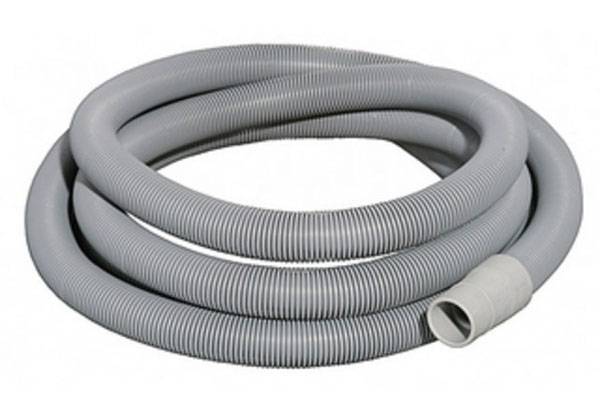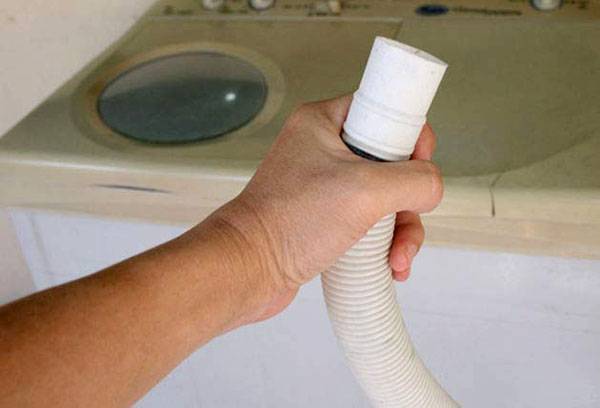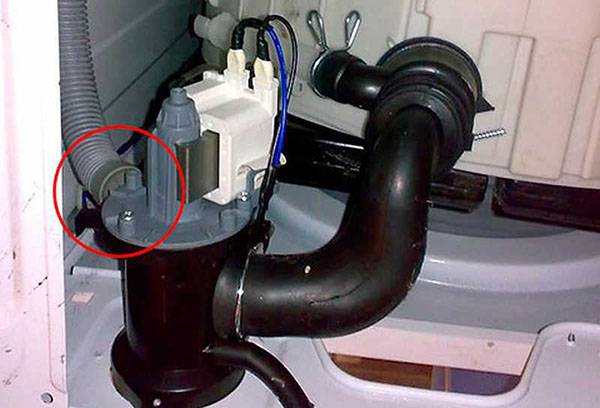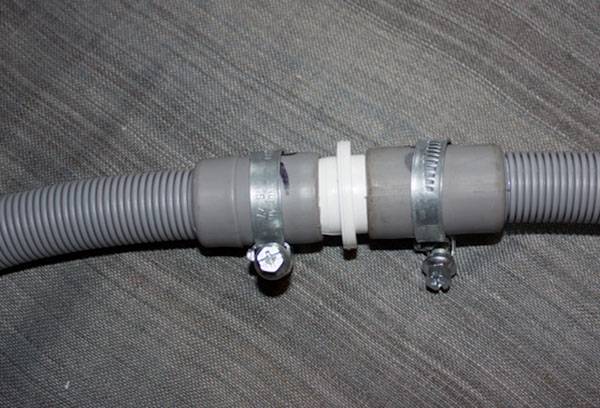How to replace the drain hose of washing machines of different brands yourself?
Washing machines are equipped with a drain and fill component. How to change the drain hose in a washing machine, and what is its difference from the fill hose? The difference between these two elements is their location and the functions they perform. The filling accessory is attached to the structure from the outside. The drain is fastened from the inside. To replace the latter, partial disassembly of the machine is expected, because it will be necessary to gain access to its body for repairs.
Advice
Before replacing the old drain hose, it is better to stock up on a bucket and rags in advance. You need to be prepared for the fact that water may flow from the removed parts of the washing machine intended for liquid flow.
For different brands of cars, the drainage element comes out either from the top or from the bottom of the device. This component of washing machines does not last forever, so after some time after the start of operation of a new washing machine, it may well become unusable. Although replacing an accessory involves some difficulties, it is nevertheless more than possible to do it yourself. Replacing the hose yourself will significantly save you money on calling a technician.

Buying a new hose
The drainage component is an important element, without which the device will not be able to function properly. The purpose of this part of the structure is to drain water into the sewerage system.Different drain accessories are suitable for different brands of cars, so before you buy a new hose to replace the previous one, find out what parameters the old one had. The cost of a new element is usually low.
Advice
The purchased drainage element must be thoroughly inspected for leaks.
There are different types of accessories designed to drain water during washing.
- Standard length drain component. The sizes of the classic version vary from 1 to 5 meters. If this is not long enough for your brand of washing machine, you can connect several of these hoses together using clamps.
- Telescopic hose. This accessory is universal. Available in compressed form, thanks to this, a hose 0.5 meters long can be stretched to 1.5. This is a mobile and convenient component, the only drawback of which is the large corrugated wave. It can produce quite a strong vibration when washing. If you purchased a telescopic version of the drain device, stretch it carefully to avoid a break.
- Coiled accessory for water drainage. It is made from small modules (50-55 cm). When installing such a hose, you can vary its length in multiples of the module size.
Self-replacement of the drain hose inside Indesit, Samsung, Beko, LG, Whirpool machines
The most convenient way to get to the drainage accessory in the Indesit, Samsung and similar models of washing machines is to start disassembling them through the bottom of the machine.
Advice
Each brand of washing machine works a little differently. Therefore, during the process of disassembling the machine and disconnecting the hose to replace it, you can take photos.By using the photo, in the future you don’t have to worry about the correct assembly, because you will put everything in place as it was in the original version.
To replace it, it is better to use the proposed algorithm of actions.
- Turn off the water supply and power supply to the machine. You cannot replace the hose if you are washing clothes in the machine. If washing is in progress, you must wait until it is completed and then empty the drum.
- Move the washing machine away from the wall. To make it more convenient to manipulate its lower part, tilt it and lean it against some reliable object.
- Next, remove the base panel.
- Proceed to remove the filter from the drain pump. It is better to do this slowly. This is where a bucket comes in handy to drain the remaining water.
- Remove bolts or other fastenings of the volute. Then remove it too.
- Loosen the clamp that secures the hose to the drain pump and disconnect the hose.
- After detaching the hose, you need to pull it and thus remove it from the structure.
- Install a new drainage component. Secure it to the pump using a clamp.
- Reinstall all removed parts of the washing machine.
- After installation, you should make sure that all fastenings are held in good condition.
Insecure connections can lead to leakage.
Attaching the hose to the body and positioning the end of the drainage accessory
After removing the accessory from inside the machine body to the outside, it must be secured to it. It's not right to just put it down on the floor. The washing machine usually comes with a hook or ring. It is on this mount that you need to hang the drain component.
The end of the drainage hose can be thrown over the edge of the sink.In this case, the hose must be positioned at a height of approximately 50-90 cm. Use a plastic holder to bend the end of the drainage accessory. This is done so that the drainage element does not break.
Another option is to place it in a branch pipe for drainage in the sink. In this case, the pipe branch must be higher than the drain siphon so that the hose is no lower than half a meter above the floor. For a secure connection, use a clamp. And finally, another connection option is directly to the drainage pipe.
If you need to extend the drain accessory
This situation may arise if you bought a new drain component, but taking into account the layout of the apartment and the location of the washing machine, it turned out to be too short. In this case, it may need to be lengthened. To make the accessory longer, select fasteners and a connector to ensure reliability and tightness of the connection. You can extend the drain hose using a thin plastic or metal-plastic tube (about 20 mm in diameter), a telescopic tube or corrugation.
How to lengthen?
- Connect the 2 parts together using a tube inside, ensuring a tight fit and tightness. Place the connecting point in the center of the connecting tube.
- Secure the rubber tips with clamps. Make it as tight as possible, but without over-tightening, so as not to provoke a rupture.
- If you have a plastic tip, you need to insert a piece of a similar hose into it, and put a rubber tip on top. Secure the connection using clamps.
- To ensure greater reliability, connect the ends of the tubes to each other.When placing the drainage component, make sure that there are no sharp objects that could tear it.
Important!
When using an extension of the drainage component, you must be prepared for the fact that this may create additional load on the drain pump. He will have to drive water through an additional area. In addition, when extending there is a connection point. There is also a risk of leakage.


